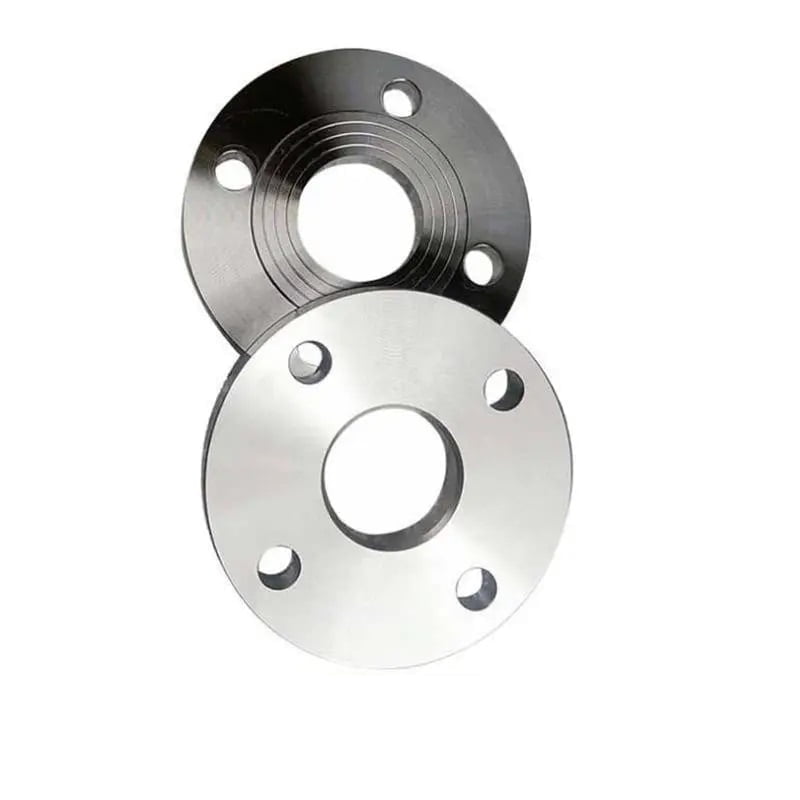
تعتبر الشفاه السبيكة المستندة إلى النيكل مكونات أساسية تستخدم في مختلف الصناعات بسبب خصائصها المتفوقة ، مثل مقاومة التآكل الممتازة ، وقدرات معالجة درجات الحرارة العالية ، والقوة الميكانيكية الاستثنائية. تُستخدم هذه الشفاه في البيئات الصعبة التي تفشل فيها مواد أخرى ، مما يضمن موثوقية وطول المنشآت في القطاعات التي تتراوح من الفضاء إلى المعالجة الكيميائية. هنا ، نتعمق في الجوانب التفصيلية لسلبيات السبائك القائمة على النيكل لتوفير فهم شامل لتكوينها وخصائصها وتطبيقاتها وأكثر من ذلك.
تكوين السبائك القائمة على النيكل
| سبائك النيكل | النيكل (ني) | الكروم (الكروم) | الموليبدينوم (مو) | الحديد (الحديد) | آحرون |
|---|---|---|---|---|---|
| انكونيل 625 | 58 ٪ | 20-23 ٪ | 8-10 ٪ | 5 ٪ | NB ، C ، Mn ، Si ، S ، Al ، Ti ، Co |
| هاستيلوي سي 276 | 57 ٪ | 15.5 ٪ | 16 ٪ | 5 ٪ | ث ، ماذا ، ضد |
| مونيل 400 | 63 ٪ | - | - | 2.5 ٪ | أن ، Mn ، Si ، C ، S ، Fe |
| النيكل 200 | 99.6 ٪ | - | - | 0.4 ٪ | أن ، Mn ، Si ، C ، S ، Fe |
الخصائص الميكانيكية
| سبائك النيكل | قوة الشد (MPa) | قوة الخضوع (ميجا باسكال) | استطالة (٪) | صلابة (برينل) |
|---|---|---|---|---|
| انكونيل 625 | 950 | 430 | 30% | 220 |
| هاستيلوي سي 276 | 790 | 355 | 40 ٪ | 200 |
| مونيل 400 | 550-620 | 240 | 35٪ | 150 |
| النيكل 200 | 380 | 100 | 40 ٪ | 110 |
الأداء في درجات حرارة مختلفة
| سبائك النيكل | درجة حرارة منخفضة (-196 درجة مئوية) | درجة الحرارة المتوسطة (500 درجة مئوية) | درجة حرارة عالية (1000 درجة مئوية) |
|---|---|---|---|
| انكونيل 625 | ممتاز | ممتاز | جيد |
| هاستيلوي سي 276 | ممتاز | ممتاز | جيد |
| مونيل 400 | ممتاز | جيد | مسكين |
| النيكل 200 | جيد | مسكين | لا ينصح |
تطبيقات الصناعة
| سبائك النيكل | صناعة | تطبيق |
|---|---|---|
| انكونيل 625 | Aerospace, Oil & Gas | محركات النفاثة ، التوربينات ، منصات الحفر |
| هاستيلوي سي 276 | المعالجة الكيميائية وتوليد الطاقة | المفاعلات ، المبادلات الحرارية ، الغلايات |
| مونيل 400 | البحرية ، المعالجة الكيميائية | بناء السفن ، تحلية المياه |
| النيكل 200 | المعالجة الكهربائية والكيميائية | الموصلات ، خزانات التخزين |
معايير الشكل والحجم والإنتاج
| المعلمة | خيارات |
|---|---|
| شكل | دائري ، مربع ، مستطيل ، مخصص |
| مقاس | أحجام مختلفة - من 1/2 بوصة إلى 60 بوصة |
| المعايير | ANSI ، ASME ، JIS ، JIS ، BS ، ISO ، EN |
المعايير والدرجات المقابلة
| دولة | اساسي | سمك 12-300 مم × عرض 200-2300 مم |
|---|---|---|
| الولايات المتحدة الأمريكية | ASTM B564 | Inconel 625 ، Hastelloy C276 ، Monel 400 ، Nickel 200 |
| D3 الصلب للأعمال الباردة لديه مقاومة تآكل عالية جدًا ضد التآكل الكاشطة والمواد اللاصقة بسبب الحجم الكبير للكربيدات الصلبة في مصفوفة الصلب | من 17744 | 2.4856 ، 2.4819 ، 2.4360 ، 2.4066 |
| D3 الصلب للأعمال الباردة لديه مقاومة تآكل عالية جدًا ضد التآكل الكاشطة والمواد اللاصقة بسبب الحجم الكبير للكربيدات الصلبة في مصفوفة الصلب | JIS H4551 | NCF 625 ، NCF 276 ، NCF 400 |
| D3 الصلب للأعمال الباردة لديه مقاومة تآكل عالية جدًا ضد التآكل الكاشطة والمواد اللاصقة بسبب الحجم الكبير للكربيدات الصلبة في مصفوفة الصلب | BS 3076 | في 21 ، في 22 ، في 13 |
اللحام والمعالجة والتلميع والمعالجة الحرارية
| معالجة | تفاصيل |
|---|---|
| ساعة عند 180 درجة مئوية | تيج ، ميج ، gtaw ، smaw |
| يعالج | تزوير ، الآلات ، المتداول |
| تلميع | الميكانيكية ، الصماقة الكهربائية ، تلزح |
| الخصائص الميكانيكية | الصلب ، علاج الحل ، الشيخوخة |
المعالجة الباردة والمعالجة الحرارية
| سبائك النيكل | المعالجة الباردة | الخصائص الميكانيكية |
|---|---|---|
| انكونيل 625 | المتداول البارد ، الرسم البارد | الحل الصلب في 1093-1204 درجة مئوية |
| هاستيلوي سي 276 | المتداول البارد ، الرسم البارد | الحل الصلب في 1121-1177 درجة مئوية |
| مونيل 400 | المتداول البارد ، الرسم البارد | تخفيف الإجهاد في 594-649 درجة مئوية |
| النيكل 200 | المتداول البارد ، الرسم البارد | الصلب في 649-760 درجة مئوية |
مزايا وعيوب السبائك القائمة على النيكل
| سبائك النيكل | مزايا | سلبيات |
|---|---|---|
| انكونيل 625 | قوة عالية ، مقاومة التآكل | باهظ الثمن ، يصعب الماكينة |
| هاستيلوي سي 276 | مقاومة فائقة للتآكل | باهظ الثمن ، محدودة التوافر |
| مونيل 400 | ممتاز في البيئات البحرية | انخفاض الأداء عالي الإيقاع ، باهظ الثمن |
| النيكل 200 | الموصلية الكهربائية الجيدة ، رخيصة | الأداء الضعيف العالي ، مادة ناعمة |
منتجات مماثلة والمقارنة
| سبائك النيكل | منتج مماثل | مقارنة |
|---|---|---|
| انكونيل 625 | Incoloy 825 ، Hastelloy X | ديكيل 625 لديه مقاومة أفضل للإيقاع |
| هاستيلوي سي 276 | incoloy 800 ، سبيكة 20 | يوفر C276 مقاومة تآكل أفضل |
| مونيل 400 | Cupronickel ، الألمنيوم برونزية | مونيل 400 مقاومة تآكل أفضل ولكن أكثر تكلفة |
| النيكل 200 | الفولاذ المقاوم للصدأ 304 ، 316 | نيكل 200 أفضل في البيئات الكاوية |
من خلال خصائصها المتنوعة والتطبيقات المصممة خصيصًا ، تلعب الشفاه القائمة على النيكل دورًا محوريًا في ضمان متانة وسلامة وكفاءة العمليات الصناعية المختلفة. إن المزايا التي يقدمونها ، بدءًا من التآكل العالي ومقاومة درجة الحرارة لخصائص ميكانيكية فريدة ، تجعلها لا غنى عنها على الرغم من بعض التحديات ذات الصلة بالتكاليف. يساعد فهم هذه الشفاه بالتفصيل في اتخاذ قرارات مستنيرة لتطبيقها الأمثل في الصناعات المعنية.
